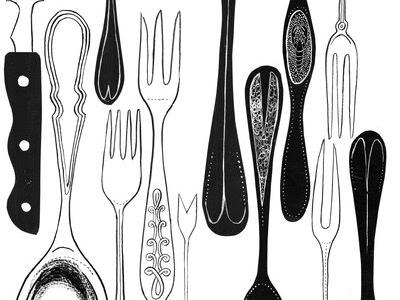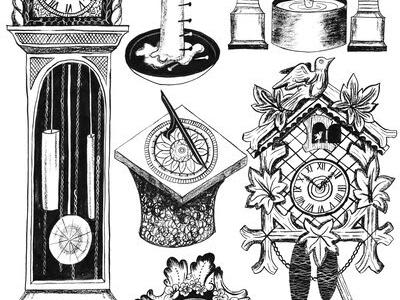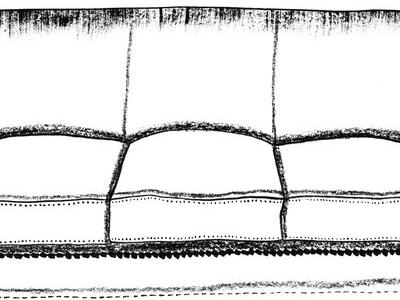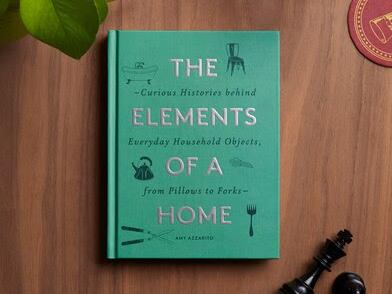The weird histories of household goods
You’re probably spending a lot of time surrounded by household objects right now, so get to know them better with Amy Azzarito’s book ‘The Elements of a Home’. Lindsey M Roberts spoke to the author to uncover the exciting lineage of our most mundane homeware

Your support helps us to tell the story
From reproductive rights to climate change to Big Tech, The Independent is on the ground when the story is developing. Whether it's investigating the financials of Elon Musk's pro-Trump PAC or producing our latest documentary, 'The A Word', which shines a light on the American women fighting for reproductive rights, we know how important it is to parse out the facts from the messaging.
At such a critical moment in US history, we need reporters on the ground. Your donation allows us to keep sending journalists to speak to both sides of the story.
The Independent is trusted by Americans across the entire political spectrum. And unlike many other quality news outlets, we choose not to lock Americans out of our reporting and analysis with paywalls. We believe quality journalism should be available to everyone, paid for by those who can afford it.
Your support makes all the difference.Many of us have recently had to contemplate the temporary loss of toilet paper (which has only been on a cardboard roll as we know it since 1890, according to Charmin), so now is a good moment to count our blessings and appreciate anew what we have previously taken for granted.
Fortuitously timed for those of us suddenly spending a lot of time at home is design historian Amy Azzarito’s new book, The Elements of a Home, which has fascinating histories of all sorts of household goods: bathtubs, duvets, fireplaces, pillows, spoons and more.
Azzarito used to write about the history of objects for the popular blog Design Sponge. “This is what we were trained to do,” she says, “look closely at an object, an artefact, and zoom out from there and see what it tells us about society and culture.” She has a master’s in library science and used those skills to page through about 500 books for her research.

“Following the trail is one of the most enjoyable parts for me,” she says. “Sitting at my desk with 30 books open, trying to find every reference I can to plates.” I talked with Azzarito about the history behind some of her favourite household objects.
The clock
Before timekeepers were so widely available, clock-less factory workers paid “knocker-uppers” a penny a month to knock on their windows in the morning. “Our lives are definitely easier without having to hire someone to knock on your window,” Azzarito says.
The history of clocks, of course, starts with ancient sundials, then moves to the first mechanical clock in the year 723. Later, in the 14th century, each town or city had a large public clock that chimed to keep people on schedule. When clocks finally became something of an attainable luxury, Napoleon made sure he had 36 in his chateau – though not nearly enough for its 1,500 rooms.
The fork
When researching, “the fork was certainly one of my favourites,” Azzarito says. “This thing that we interact with every single day of our lives was once deemed immoral and unhygienic.” It didn’t help that the early two- or three-pronged fork looked so much like a devil’s pitchfork.
Although the first forks were used in the Byzantine Empire, between 330 and 1453, they weren’t socially acceptable in the rest of the world until sugary, syrupy dried fruit was all the rage with Renaissance Italians. It was impossible to eat while keeping hands and ruffled sleeves clean – unless you used a fork.
“When does the fork get adopted? When there’s a craze for a new sugary treat,” says Azzarito. “Even humans hundreds of years ago had a sweet tooth and were willing to risk their dance with the devil for dessert. And that’s how the fork comes back in.”
The bath
After exercising, men in ancient Greece would stand under cold water poured by spouts or servants. They believed strongly in a cold shower being morally superior to a relaxing warm bath. “The more things change, the more they stay the same,” Azzarito says, noting that cold showers are back in vogue – many argue they’re better for sleep and productivity.
From 1500 to 1700, bathing fell out of favour because medical experts believed that “water opens the pores and allows disease to enter the body,” she adds. It was only with the advent of Enlightenment thinking that regular bathing crept back into daily life.

People started dabbling with baths on a larger scale in the Victorian era, when the Greeks were admired anew. Once indoor plumbing was possible, postwar houses in the 1950s were built with hot water on tap, making a steamy shower the experience we expect in our bathrooms.
The sofa
You can thank Louis XIV for a comfortable seat as you binge-watch Netflix for the next few weeks. During the Middle Ages, kings, queens and their courts travelled with their furniture in tow from castle to castle. Portability was the selling point. Ten-year-old Louis had to flee Paris to Saint-Germain-en-Laye without his furniture, however, in 1648 because of a civil war, which meant that when courtiers came to visit him there, they had nowhere to sit.

“He was humiliated that he couldn’t provide hospitality,” Azzarito says. He spent the rest of his life compensating, creating the famous Versailles with comfortable pieces of furniture.
Azzarito’s favourite fact about the sofa, however, is that 18th-century Britons were scandalised by its provocative reputation. (Marketing often showed women lying on them.)
“This didn’t keep them from buying the sofas, though,” Azzarito explains. “They’d just move the sofas out and hard chairs in when there was company.”
© The Washington Post
Join our commenting forum
Join thought-provoking conversations, follow other Independent readers and see their replies
Comments